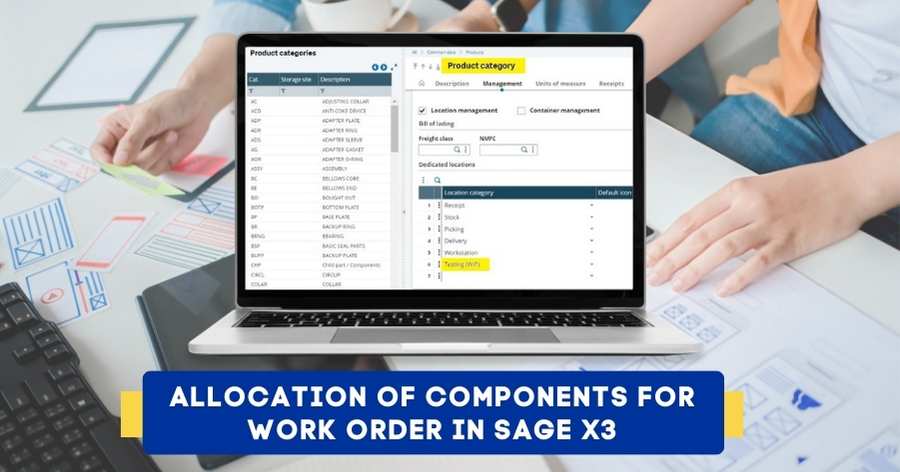ERP implementation can be a complex process with many phases. However, with proper planning and execution, you can ensure a successful implementation. Here is a guide to the phases of ERP implementation so that you can be prepared for each step :
Phase 1- Research & Planning
An ERP implementation is complex and multi-faceted. Successful performance requires careful planning and discovery to meet all business needs.
The discovery and planning phases of ERP implementation are critical to the project’s success. During this phase, the ERP team works with business stakeholders to understand their needs and requirements. This information is used to create a detailed plan for the ERP implementation.
The discovery and planning phase can be lengthy, but ensuring a successful ERP implementation is essential. By taking the time to understand the business needs and create a detailed plan properly, the ERP team can set the project up for success.
Phase 2- Design
The second but one of the most crucial phases of ERP implementation design phase of an ERP implementation is critical to the overall project’s success. This is the phase where the ERP system is configured to meet the organization’s specific needs.
The ERP system is configured during the design phase to meet the organization’s specific needs. This includes setting up the system to use the organization’s preferred methods and standards.
Organizations should involve key stakeholders in the design phase to ensure that the ERP system meets the needs of all users. The design phase should also include testing to ensure the system works as expected.
The design phase is critical to an ERP implementation and should be considered. Organizations should involve key stakeholders, test the system, and use the organisation’s preferred methods and standards to ensure a successful project.
Also Read: Why ERP implementation is a challenging task?
Phase 3- Development
With your growing business, your needs also grow. You’ll find that your current software can’t keep up. This is where ERP comes in. ERP software is designed to help businesses streamline and automate their operations.
The first step in one of the phases of ERP implementation is to choose the right software for your business. There are many options, so it’s essential to do your research. Once you’ve selected the software, you’ll need to install it and get it up and running.
After the software is up and running, you’ll need to enter your data. This can be time-consuming, but it’s crucial to get it right. Once your data is entered, you can start using the features of your ERP system.
One of the significant elements of ERP software is data security. Make sure that you have a robust data security plan in place before you start using the system.
Phases of ERP implementation can be complex and time-consuming, but it’s worth it for its benefits to your business.
Phase 4- Testing Phase
One of the important phases of ERP implementation is the testing phase, which can be a critical time for businesses. This is when all the modules and components of the system are tested to ensure they work correctly.
Many tests must be carried out during this phase, including functional, performance, compatibility, and stress.
Functional testing ensures that all the modules in the system work correctly and as expected. This is essential to avoid any problems once the system goes live.
Performance testing measures the speed and responsiveness of the system. It is essential to ensure that the system can cope with the expected load and user demand.
Compatibility testing is essential to ensure the system works correctly with other software and systems it needs to interface with.
Stress testing is performance testing that pushes the system to its limits to see how it copes under extreme conditions.
All of these tests are essential to ensure that the ERP system is ready for go-live. The testing phase can be complex and challenging, but it is necessary to ensure that the system is ready for use.
Also Read: What is ERP explain the general ERP Implementation Methodology?
Phase 5- Deployment
After the implementation phase of an ERP project is complete, it’s time to move on to the deployment phase. This is when the new system is implemented, and everyone starts using it for their daily tasks.
The deployment phase can be tricky, as many moving parts and different people can be involved. Here are some tips to make the business process run smoothly:
- Get everyone on board early. The sooner everyone knows about the deployment phase and their role, the better.
- Have a clear plan. Before you start, ensure you have a clear idea of what needs to be done and who will do it. This will help provide clarity and timely changes.
- Test, test, test. Once the new system is installed, it must be tested thoroughly to ensure everything works. This includes both functional testing and user acceptance testing.
- Be prepared for bumps in the road. Regardless of your plan, there’s always a thing that will go wrong. Be ready for this and have a contingency plan in place.
- Celebrate your success. Once the deployment phase is complete, take a moment to celebrate your team’s hard work. This is a significant accomplishment, and everyone deserves to feel proud.
Phase 6- Support Phase
The support phase of an ERP implementation is critical to the overall project’s success. This is the phase where users receive training and support to help them fully utilize the system.
Adequate support during this one of the phases of ERP implementation can mean the difference between a successful implementation and failure to meet expectations. That’s why it’s essential to have a clear plan for how you will support users during this phase.
Here are some tips for ensuring a successful support phase:
- Make sure you have a dedicated support team in place. This team should be familiar with the system and be able to resolve any issues that users may have.
- Provide comprehensive training. Users should be allowed to learn about the system in a way that best suits their needs.
- Be responsive to user questions and concerns. Make sure you have a process in place for addressing user feedback.
- Monitor system usage and performance. This will help you identify areas where users are struggling and make necessary changes.
- By following these tips, you can ensure that your ERP implementation is successful from start to finish.
Also Read: Top 5 ways to drive a successful multi-company ERP implementation
Get the best ROI with the Phases of ERP Implementation
Despite the many factors that can be utilized to count the success of an ERP implementation, the most crucial factor is the ROI. The ROI measures how much money the company saved or made due to the implementation. If the ROI is positive, then the performance was successful. If the ROI is negative, then the implementation was not successful.
It was successful if the implementation was completed on time or even ahead of schedule. If the implementation was completed on time, it was successful.
Users’ satisfaction can also be used to track the success of an ERP implementation. If the users are happy with the system, the implementation is successful.
If the users are unhappy with the system, the phases of ERP implementation are unsuccessful.
The improvement in business processes can also be used to measure the success of an ERP implementation. If the implementation improved business processes, then it was successful. If the implementation enhanced business processes, it was successful.
Even though the ROI is the most critical factor in measuring the success of an ERP implementation, there are other factors besides this.
With this post, you should have a good understanding of the phases of ERP implementation. If you plan to implement ERP software, follow these steps to ensure a smooth process.
Sage Software Solutions is a leading IT company with an array of advanced ERP Software solutions. Our proprietary products — Sage X3 and Sage 300 will help you cut your operational expenses, improve business productivity, increase operational efficiency, forge robust customer relationships, and strengthen association with vendors, suppliers, and distributors. So, if you are looking to reinforce your business fundamentals and emerge as an industry leader, then please schedule a call with one of our sales representatives.





